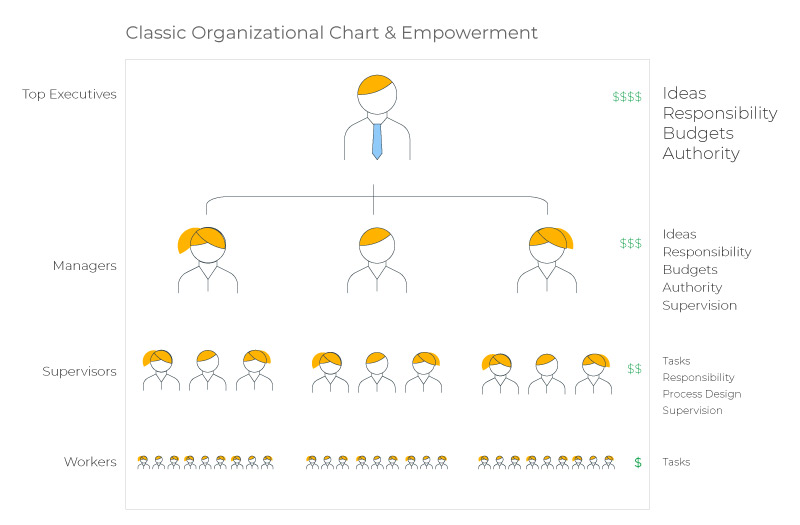Past Time for Change - A Post to the Jewelry Industry
- Short Summary: A business living on auto-pilot ultimately dies of its own apathy. In business every time is a time for change and change is the only way to grow.
We humans aren't particularly fond of change. The status quo feels safe, and it allows us to operate on auto-pilot. But while auto-pilot is excellent for basic functions like breathing and walking, it's generally not a terrific way to navigate one's life.
On a personal level, living too much on auto-pilot means we miss out on living in-the-moment and enjoying the beauty, enlightenment, and humor that comes from experiencing (and not just passing through) the every-day. On a business level, living too much on auto-pilot is more dire; at some point, a business on auto-pilot simply dies of its own apathy.
Some businesses can't avoid change. If you own an electronics store, if you are a software developer, if you own an apparel boutique - you've had no choice but to embrace change. For one thing, the products keep changing. For another, the customers have demanded new sales channels. But somehow the jewelry industry has successfully insulated itself against change - not all of it, but too much of it - and it's now time to come late to the party or to fade out like dinosaurs. It's past time for change.
There are many reasons why jewelry stores have rationalized change avoidance. The inventory is expensive! But can you imagine walking into a Lexus dealer and not finding the new models, colors, and options? Their inventory is certainly expensive. Our security requirements are high! But Apple products have a high street-value, and still they found a way to make their products completely interactive in the store. It takes a long time to become an expert in selling jewelry! Though one doesn't learn to sell cars, complex software, or computers overnight either.
I think the worst thing that ever happened to the jewelry industry was that it was an island for so long. Lack of competition makes one complacent. And when competition started becoming more of an issue, the jewelry industry reacted by carving out regions for exclusives, demanding that suppliers not sell on their own websites, and competing on price. All recipes for a deferred disaster.
If I have totally irritated you by now, then I am not writing this column for you. If I have scared but energized you, then there is tremendous potential for your business.
I have spent the past week in Las Vegas, at the JCK and Couture shows. I have had dozens of meetings with clients and prospective clients, walked the floor, hung out at booths, and observed from corners. One thing is abundantly clear. The time for change is past.
If you're curious about what must happen now, in order to maintain an industry that has an independent retail core and continues to define what makes fine jewelry fine jewelry, here are a few things for you to consider implementing and embracing:
1. Stop commoditizing! We've turned jewelry into the sum of its parts, and that's tragic. If you took a pile of metal, leather, plastic, and electronics to a Mercedes dealer and asked them to make you a Mercedes for the cost of the labor, it would never happen. That paragraph probably barely makes sense to you! Yet we do that every day with jewelry. The entire industry is complicit in this activity. How did we get to the point of competing on price? Because we didn't effectively execute the next 5 points, so price was all that was left.
2. Respect Brands. Your own, and those of your vendors. There was a time when a jewelry store could take in loads of generic merchandise and play it like it was all the store's brand, but the store's brand may have been weak to begin with, and anyway, that doesn't fly any more. Consumers look for and want to engage with brands. Build a brand for your store that is one part sales and service, two parts merchandise, three parts stories, and four parts character and identity. Your merchandising strategy needs to celebrate the brands and designers you have available to you, and you need to be energetic and creative enough to build a brand for your store that goes beyond the basics.
3. Leverage technology. In the shop (CAD/CAM, Laser Welders, growing models, and soon - powdered metals!), in your marketing department, in your merchandising, in your management, and on the sales floor. You are no longer competing with the jewelry store on the other side of town. You are competing with jewelry stores across the country. And yes, you are competing with your own vendors. Jewelry is everywhere! You can fight a losing battle to hold onto exclusive products and territory, or you can jump into the action and find out how to be your target customers' preferred supplier no matter what. You need technology to do this. If you are just focused on a narrow, local market you can probably (possibly?) get away with antiquated systems. But remember that even if you don't feel like competing with the rest of the world, the rest of the world feels like competing with you.
4. Get educated. For generations it has been possible to DIY small business. But not any more. Small business owners are increasingly the products of large corporate management environments with MBAs, exiting corporate life to pursue their own dreams of business success. So you're not just competing against big businesses, you're competing against ever-more-sophisticated small businesses. It's never too late to get business training or formal education in business. If your business is heading into a second, third, or fourth generation, make sure your successors are getting terrific educations, and encourage them to work for demanding corporate environments and get rigorous training (from someone who is not a parent) before they step back into the family business.
5. Be a Merchant. Retail has always been about building a shopping experience, and the products are a defining part of that experience. Merchandise selection must be exciting, constantly changing, fueling the perception of the brand, and compelling. Is that difficult? Sure it is. But if you wanted easy you'd be doing a 9-to-5 in a cubicle somewhere. Is it challenging? Yup. You'll have to get creative about turning inventory, just like auto dealers and high-end luxury environments have to do (all retailers, really).
6. Be a Marketer. If you're spending less than 6% of your retail sales volume on marketing and sales efforts (not including salaries and commissions), then you're underspending. Truthfully, if you want to just maintain your current volume and visibility, the spend should be more like 6% - 9%. Do you want to expand your market and grow? Plan on 10% - 13%. That means you must have a brand that creates desire and mitigates price competition (see #2 above), you must have an exciting merchandise perspective (see #5 above), and you must have decent margins (see #1, #2, #3, #4, and #5 above). Marketing is expensive, yes, but so is going out of business.
I was part of the video industry from the very beginning when it was filled with Ma & Pa retailers. I participated in opening the first two Blockbuster stores. I watched the independent video owners disappear, largely due to similar conditions we see in the jewelry industry today. Over a decade later, I was part of a group that was brought to Blockbuster to help it figure out its next thing (which looked a lot like Netflix), but they passed on that. Apathy, failure to market, failure to differentiate, failure to brand, and failure to embrace and use technology (and keep changing with it) all played a role in that industry's rapid changes.
But that's not the change we want. The change we want is the opportunity to define our future as a jewelry industry. And we can. Let's get to it.

 There was nothing at all wrong with my knee, though if I’d ignored it any longer, there probably would have been some lasting damage. No, the thing that was in need of repair was the muscle below my knee, my extensor digitorum longus. Once I addressed the problem with that muscle, the pain in my knee went away. Completely. I feel 10 years younger.
There was nothing at all wrong with my knee, though if I’d ignored it any longer, there probably would have been some lasting damage. No, the thing that was in need of repair was the muscle below my knee, my extensor digitorum longus. Once I addressed the problem with that muscle, the pain in my knee went away. Completely. I feel 10 years younger.
